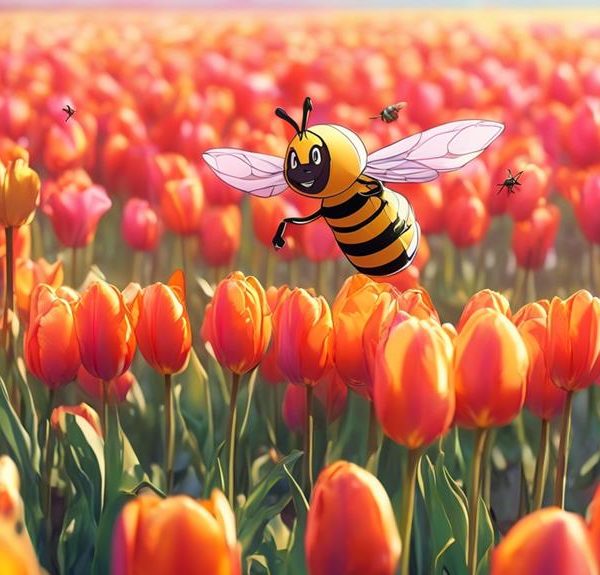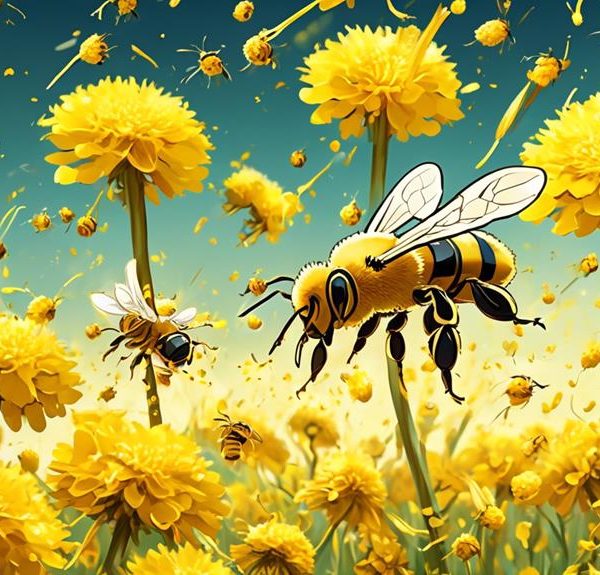Start your journey into the buzzing world of leaf cutter bees and discover their favorite plants in your garden.
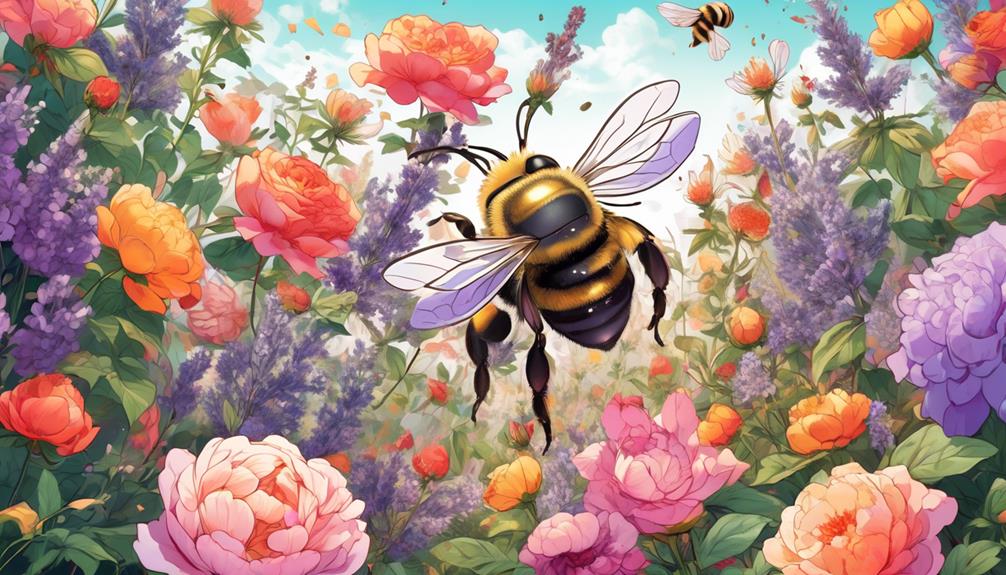
What Plants Do Leaf Cutter Bees Like?
You might have noticed the unique patterns left behind by leaf cutter bees on your plants, an artistic dance of nature that's less about destruction and more about the circle of life.
These fascinating creatures are known for their preference for certain plants, but do you know which ones they favor the most?
As you embark on this journey to understand the plant preferences of leaf cutter bees, you'll uncover not just the favorite plants of these busy garden visitors, but also how to attract them and why their presence is beneficial.
This knowledge can transform your garden into a living, buzzing work of art. But be forewarned, once you start exploring the world of leaf cutter bees, you might find it hard to turn away from the hive.
Key Takeaways
- Leaf cutter bees prefer plants like roses, green beans, and peonies for nest construction and as a food source.
- Nectar quality, determined by sugar concentration and essential amino acids, is important to leaf cutter bees.
- Native plants with thin, soft leaves like roses, green beans, bougainvillea, and azaleas are attractive to leaf cutter bees.
- Leaf cutter bees are particularly drawn to plants in the Asteraceae family, legumes like alfalfa and clover, and exotic plants like the Rose Mallow.
Understanding Leaf Cutter Bees
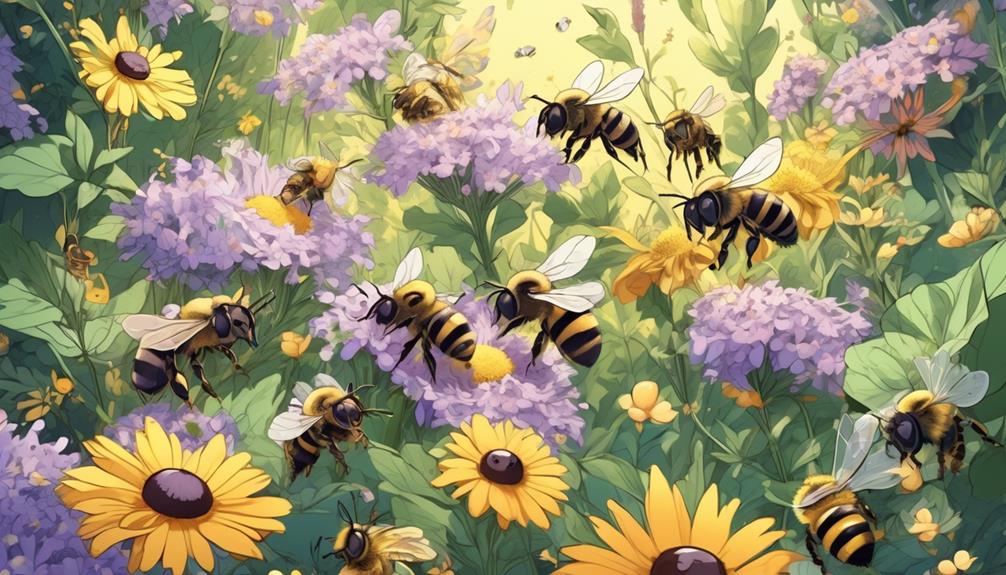
To fully grasp the world of leaf cutter bees, you'll need to delve into their unique behaviors, life cycle, and the special relationship they maintain with certain types of plants.
Leaf cutter bees, scientifically known as Megachilidae, are non-aggressive, solitary bees that prefer to construct their nests in soft, rotten wood or in the soft pith of plant stems. Unlike honey bees, they don't produce honey or beeswax, but are known for their peculiar habit of cutting neat circular and oval pieces of leaves.
Understanding their life cycle is crucial. A single female leaf cutter bee does all the work, from constructing the nest to providing for her offspring. She lays one egg per cell and provisions it with a mixture of nectar and pollen. The egg hatches into a larva, which eats the provisions, pupates, and then emerges as an adult bee.
The plant-bee relationship is symbiotic. Leaf cutter bees are crucial pollinators, transferring pollen as they move from flower to flower collecting nectar. They prefer plants like roses, green beans, and peonies. Despite their leaf-cutting activity, they don't cause significant damage to plants.
Plant Preferences of Leaf Cutter Bees
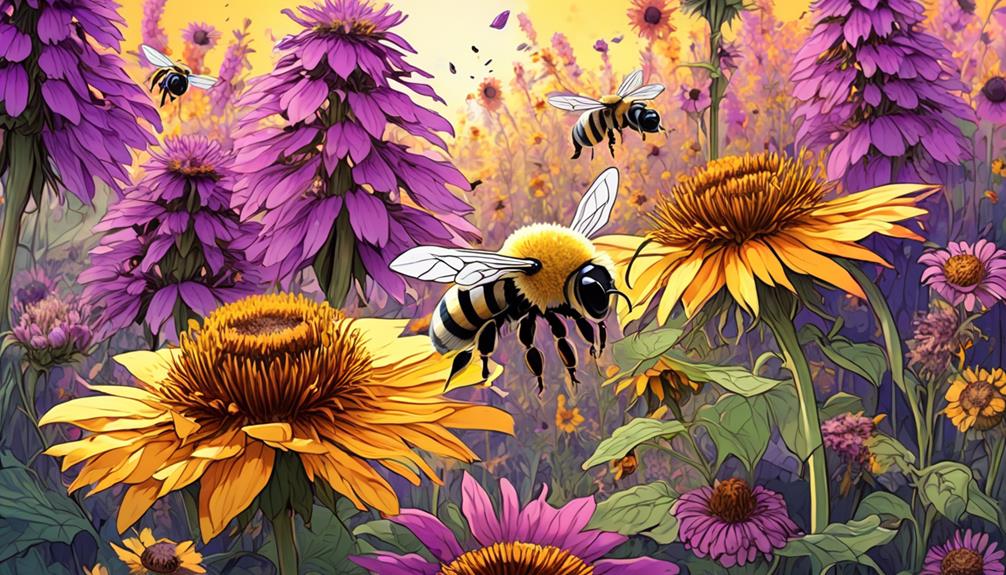
Delving into the plant preferences of leaf cutter bees, you'll find that these industrious insects favor certain plants over others, often choosing roses, green beans, and peonies as their primary sources of nectar and leaves for nesting material.
You might wonder what makes these plants so attractive to leaf cutter bees. To answer this, it's important to understand that these bees aren't just seeking nectar. In fact, they're also on the hunt for suitable leaves to construct their nests. Roses, green beans, and peonies provide leaves of suitable thickness and flexibility, making them ideal for this purpose.
Additionally, these plants produce high-quality nectar, which leaf cutter bees need for energy. Nectar quality is determined by several factors, including sugar concentration and the presence of essential amino acids. Roses, green beans, and peonies excel in these aspects, offering the bees a nutritious and energy-rich diet.
Attracting Leaf Cutters With Native Plants
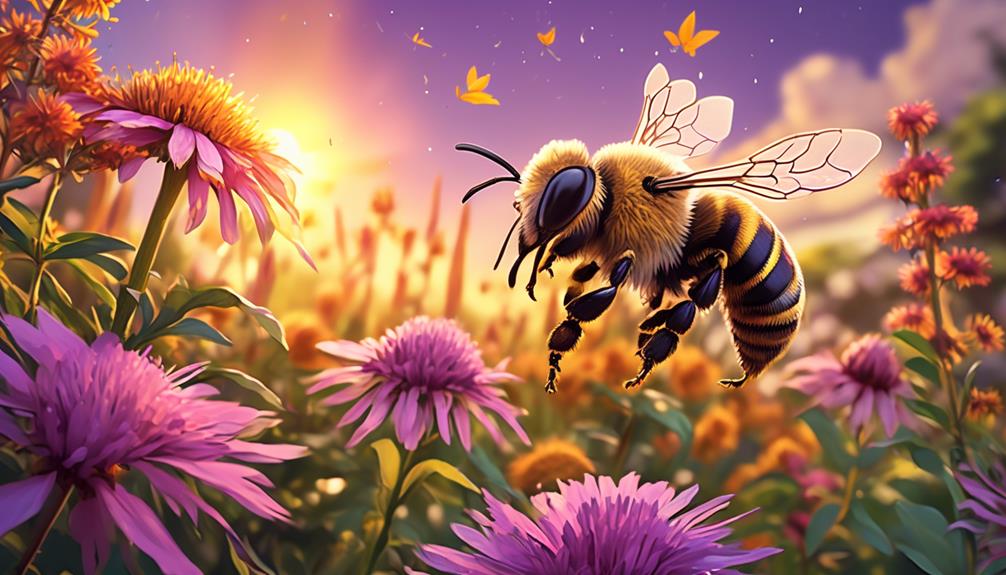
If you're keen on attracting leaf cutter bees to your garden, incorporating native plants into your landscape can be an effective strategy. These bees are typically drawn to native species, as these plants provide the ideal nesting materials and food sources they need.
You'll find that leaf cutter bees are particularly attracted to plants that have thin, soft leaves, such as roses, green beans, bougainvillea, and azaleas. These provide ideal materials for their nests. Moreover, these bees prefer to forage on native flowers for pollen and nectar.
To optimize your garden for these pollinators, consider the layout of your landscape. Leaf cutter bees tend to favor sunny areas with shelter from harsh winds, so situate your native plants accordingly. Additionally, providing a source of mud, which the bees use to partition their nests, can make your garden more appealing.
Flowers That Leaf Cutter Bees Love
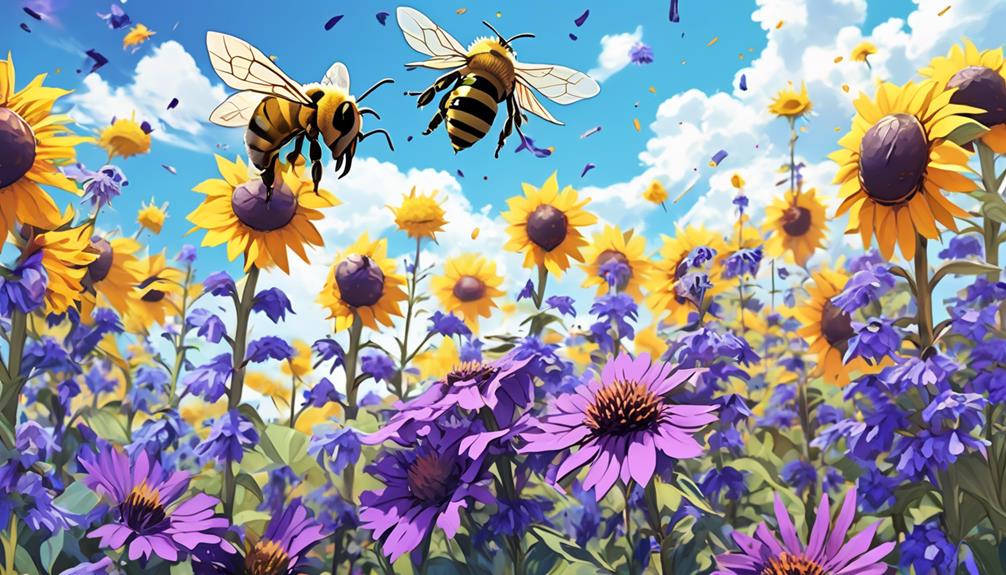
While placing native plants with soft leaves in your garden can attract leaf cutter bees, let's not overlook the importance of specific flowers these industrious insects are fond of. Research has shown that these bees are particularly drawn to plants in the Asteraceae family, including daisies and sunflowers, due to their abundant nectar and pollen.
You might also consider planting legumes, such as alfalfa and clover, which are also leaf cutter bee favorites. These plants not only provide the essential nutrients the bees need, but their leaves are ideal for nesting materials.
Now, if you're looking for something a bit more exotic, you might want to try the Rose Mallow. This plant, with its large, attractive flowers, is a leaf cutter bee magnet.
It's crucial to remember that leaf cutter bees are solitary creatures. Unlike honeybees, they don't live in colonies, so the placement of your plants can significantly impact their attraction. Try grouping similar plants together and, if space allows, create separate areas for different plant types. This strategy can make your garden more appealing and help support a healthy leaf cutter bee population.
How to Design a Bee-Friendly Garden
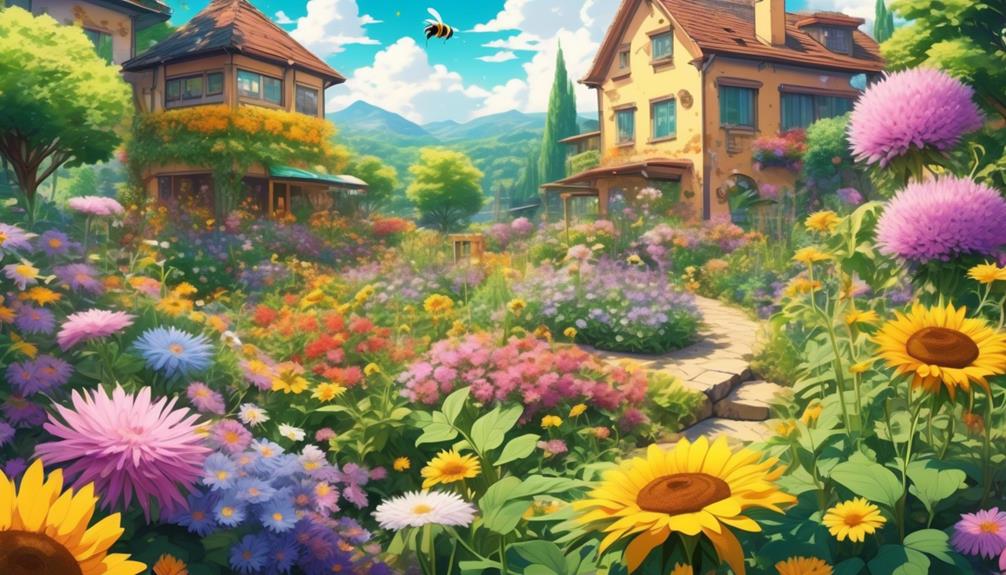
Often, creating a bee-friendly garden involves more than just selecting the right plants; it's about strategically designing the space to mimic the bees' natural habitat and meet their needs. You'll want to focus on providing a variety of flora that bloom at different times of the year to ensure there's always a food source available.
Start by selecting native plants that leaf cutter bees prefer, as these will also support local biodiversity. Arrange them in clusters to create 'target-rich' zones that attract bees. Make sure to include plants with different shapes and sizes of flowers to cater to various bee species.
Don't forget about water sources. Bees need clean water for drinking and cooling their hives. A shallow bird bath with pebbles for landing spots or a dripping tap can fulfill this need.
Lastly, bees require shelter. Leave some ground undisturbed for ground-nesting bees and consider installing a bee hotel for cavity-nesting species like leaf cutters. Avoid using pesticides, as these can harm bees.
Plants to Avoid for Leaf Cutter Bees
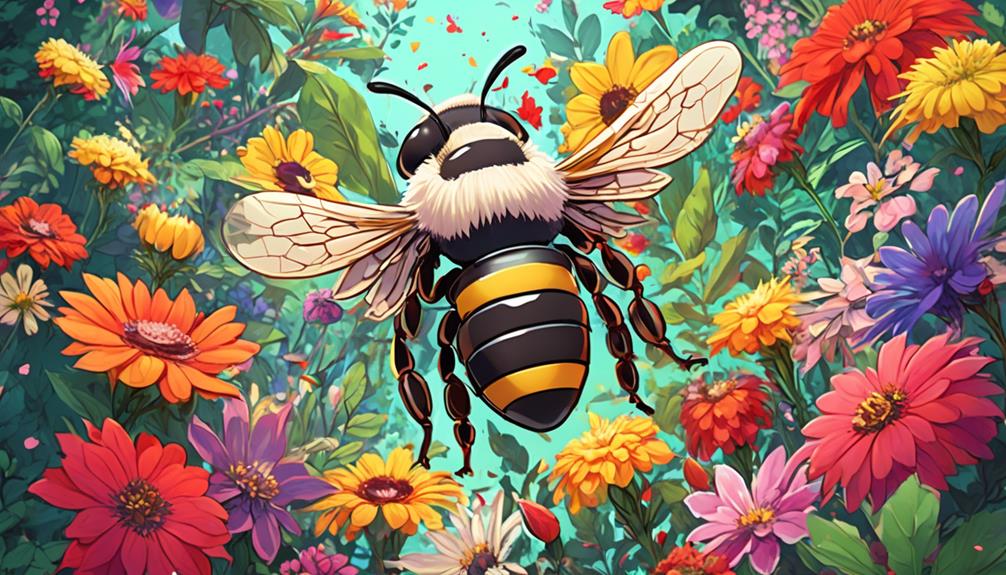
Just as there are plants that leaf cutter bees favor, there are also certain types of vegetation that you should avoid incorporating into your garden if you're aiming to attract these beneficial insects.
Firstly, stay clear of plants treated with pesticides, particularly neonicotinoids. These chemicals are known to harm bees and other pollinators. Leaf cutter bees can become disoriented or even die as a result of exposure.
Invasive plant species like Japanese honeysuckle or English ivy can also prove problematic. These plants outcompete native vegetation that leaf cutter bees might prefer, reducing the diversity and quality of available food sources.
Moreover, avoid plants with double flowers. These varieties, though attractive, often have less pollen and nectar, or make access to these resources more difficult for bees.
Lastly, certain plants, such as rhododendrons and azaleas, produce nectar that can be toxic to leaf cutter bees.
Frequently Asked Questions
What Time of Year Are Leaf Cutter Bees Most Active?"
You're curious about when leaf cutter bees are most active. These fascinating insects typically buzz into action in the summer months. That's when temperatures are warm and flowers, their primary food source, are in full bloom.
But remember, their activity can vary based on regional climates and weather patterns. So, don't be surprised if you spot them earlier or later in your area. It's all part of the intriguing behavior of leaf cutter bees.
Are Leaf Cutter Bees Harmful to My Plants?"
Leaf cutter bees aren't harmful to your plants. While they may snip leaf pieces to build their nests, they don't cause extensive harm. You might notice notches at the edge of your leaves, but this won't impair your plant's health or growth.
In fact, these bees are excellent pollinators, improving your garden's productivity. It's a symbiotic relationship, where your plants provide nesting material, and in return, bees facilitate their pollination.
Can Leaf Cutter Bees Coexist With Other Species of Bees in My Garden?"
Yes, leaf cutter bees can coexist with other bee species in your garden. They're non-aggressive and solitary. They don't compete for resources, rather they help diversify pollination.
Having a variety of bee species ensures pollination of different types of plants, increasing your garden's productivity.
What Regions Are Leaf Cutter Bees Most Commonly Found?"
Leaf cutter bees are most commonly found in warm, temperate regions. They're particularly prevalent in North and Central America, but you'll find them across the globe.
They're attracted to areas with abundant flowering plants, as they gather nectar and pollen for food. You're likely to spot them in gardens, meadows, and urban areas.
Do Leaf Cutter Bees Contribute to the Pollination Process?"
Yes, leaf cutter bees contribute significantly to the pollination process.
As you observe them, you'll notice they're prolific pollinators. They visit many plants in a short span, spreading pollen efficiently.
Unlike honeybees, they carry pollen on their abdomen, which comes into direct contact with flowers. This makes them super effective.
They're essential for biodiversity and aid in propagating many wildflowers and crops.
Conclusion
In conclusion, you'll want to attract leaf cutter bees by incorporating native plants and flowers like asters, black-eyed Susans, and sunflowers in your garden.
Avoid plants with tough leaves as these bees prefer softer foliage.
Remember, designing a bee-friendly garden isn't just about plant selection, but also providing a safe habitat.
With careful planning, you can help these pollinators thrive.

